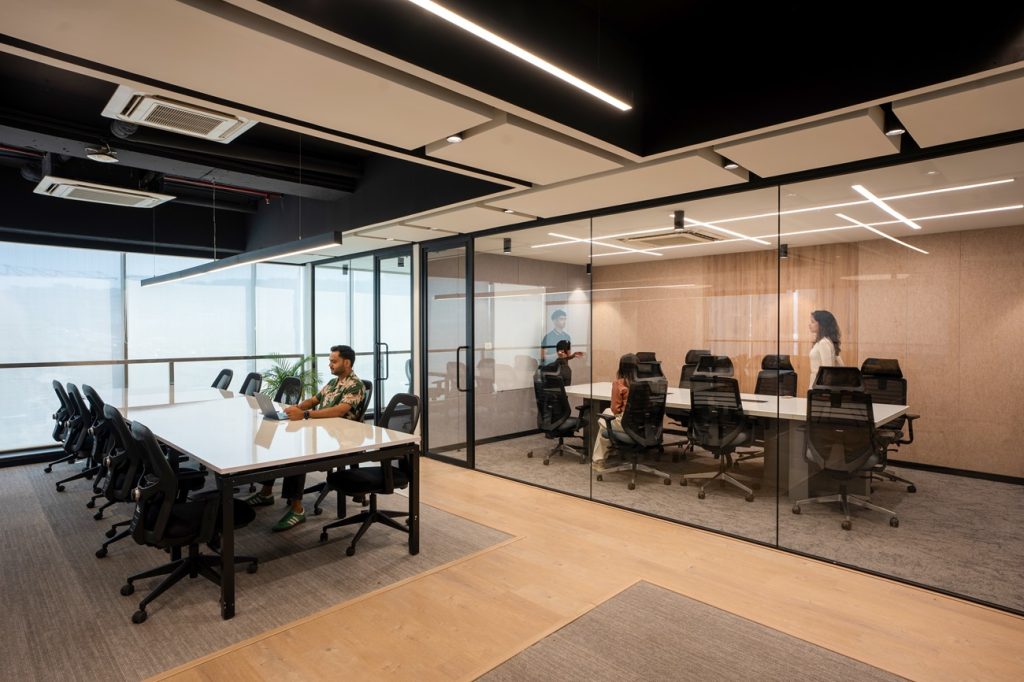What immediately comes to mind when you think about a company’s brand identity? Ad campaigns, slogans, and logos are some of the first things that pop up. However, what about the actual place where a business carries out its daily operations? A company’s office interior design dramatically impacts how an organization presents its brand.
This article explores the fascinating field of office design and how it can effectively communicate the culture and values of a business.
Designing for Identity
An office space is like a canvas, waiting for the company’s brand to be painted. It takes more than just placing the logo on the front desk to create a welcoming environment that embodies your business. A well-designed office carefully considers design elements, colour schemes, and layouts that best support the mission and values of the organization.
For instance, startup office interiors may opt for an open-plan layout with bright, contemporary furniture to reflect its innovative and collaborative spirit. In contrast, a law firm might choose a more traditional, formal design to convey professionalism and trustworthiness. The office design choices should evoke the right emotions and perceptions that resonate with the company’s brand.
Colour Psychology
Colour is a powerful tool in office design that evokes emotions and influences behaviour. Each colour has a unique psychological impact on individuals, and businesses can leverage this to reinforce their brand identity:
- Red: Symbolizes energy and passion. Companies like Coca-Cola use red to convey excitement and enthusiasm.
- Blue: Represents trust and reliability. Tech giants like IBM and Facebook utilize shades of blue to convey stability and innovation.
- Green: Associated with nature and growth. Environmental companies and health-related organizations often use green to symbolize health and sustainability.
- Yellow: Linked to optimism and happiness. Brands like McDonald’s use yellow to create a friendly and inviting atmosphere.
Choosing the right colours can significantly impact how employees and visitors perceive a company. These colours should be used thoughtfully and harmoniously with the overall design to strengthen the connection between the space and the brand.
Layout and Flow
The layout of an office design is more than just desks and chairs; it’s about how people move through the space and interact with it. How an office is organized can reflect the company’s culture and values.
For instance, a company that values collaboration may have open workstations, communal areas, and meeting spaces throughout the office. On the other hand, a company that places a premium on individual work and focus may have more private offices and secluded workplaces. The flow of the office should facilitate the company’s desired work culture. An open, flexible layout can encourage collaboration and innovation, while a more structured layout can convey a sense of order and discipline.
Incorporating Brand Symbols
Beyond colours and layout, integrating brand symbols and icons into the office design is another powerful way to reinforce a company’s identity. These symbols could be the company logo, mission statement, or quotes from the company’s founder. Imagine walking into an office and seeing a large, striking mural that depicts the company’s history and core values.
This creates a strong visual impact and reminds employees of the organization’s heritage and aspirations. Similarly, brand symbols can be incorporated into the furniture, wall art, or even the architectural elements of the space. This not only personalizes the office but also encourages employees’ sense of belonging and purpose.
Lighting as an Expression of Brand
Lighting, often an overlooked aspect of commercial interior design, plays a crucial role in reflecting a company’s identity. How a space is lit can influence the mood and ambiance, which, in turn, affects the brand’s perception.
For instance, a well-lit office with abundant natural light can convey transparency and openness, suggesting that the company operates with integrity. On the other hand, softer, warm lighting can create a more relaxed and creative atmosphere, which might be perfect for a design agency. Incorporating the company’s colours in the lighting design can further reinforce the brand. Imagine a technology company with sleek, modern office interiors bathed in blue and white LED lighting to create a futuristic, cutting-edge look.
Balancing natural and artificial light is essential. Studies show that exposure to natural light in the workplace boosts productivity by 16% and reduces employee eye strain and headaches. Using large windows, skylights, and well-placed glass walls can contribute to maximizing natural light. On the other hand, energy-efficient artificial lighting can supplement and enhance the workspace, especially during dark hours.
Studio AsA: Shaping Brand Identity Through Design
When it comes to creating office interior designs that truly reflect a company’s identity, Studio AsA is a name that stands out. Specializing in office interior design services for co-working, commercial, and office environments, Studio AsA transforms brand identity into attractive, well-thought-out, and efficient workplaces.
Through thoughtful design choices, colour psychology, strategic layout, brand symbols, and innovative lighting solutions, businesses can create office environments that reinforce their identity, values, and culture. The next time you step into an office, take a moment to see beyond the furniture and walls, you might discover a company’s true identity shining through its workplace.






